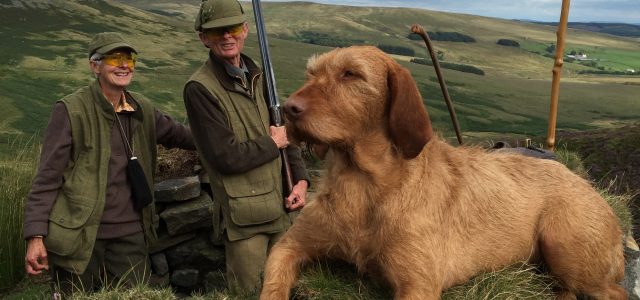
CONSERVATION
& WILDLIFE PROJECTS
As the Glorious Twelfth approaches, Duncan Thomas Regional Director of the British Association for Shooting and Conservation (BASC) North, explains how the organisation works to enhance our rural environment
The mighty Ribble Valley running through gorgeous scenery from Ribblehead down to the estuary into Morecambe Bay has everything. It’s an ecologically rich area hosting some amazing species, a real wildlife haven from moorland to marshes.
I grew up in Leyland and as a child looked forward to camping trips away with mum, dad and family friends, when packs of us kids went almost feral for the weekend in places like Stainforth, where the mighty Ribble crashes down the Foss in a series of dramatic deep pools. These pools were full of some real specimen brown trout and of course salmon later in the autumn. This, along with Malham Tarn, is where I learned to fish. The tarn produced some monster tail walking trout, plus great catches of perch – happy days!
We would barbecue the trout and perch wrapped in foil, with butter and lemon – it was the food of the gods!
I was lucky to have childhood like this as many youngsters go through an urban upbringing not knowing where their food comes from. Some describe a growing separation between urban and rural communities and with the rapid expansion of most towns, urban is meeting rural and occasionally conflicts can ensue.
It’s absolutely part of my role as Director of BASC North to address this trend. Education is key. We recently had a group of initially sceptical youngsters, plucking and de-breasting woodpigeons and tucking into them with gusto as they experienced just how easy it is to convert an agricultural pest into delicious food for all. We have taken thousands of kids shooting with us and most trips and experiences include a conservation and ‘wild-food’ section part of the day – they love it!
Out of the shooting season, the shooting community have been immensely busy with loads of conservation and wildlife projects putting back an immense amount of time, effort and cash into this amazing area. Most of these projects don’t just enhance the environment we share and the species concerned, but also provide educational opportunities for many youngsters.
Our bird-box project, generously kick-started by a Gamekeepers Luncheon at Northcote, goes from strength to strength. Managed by our leading Youngshots Ambassador Lewis Bretherton, youngsters have built countless bird boxes and placed some across game and clay shoots across the North of England. Many of the boxes are fitted with cameras and some batches even achieved a 90 per cent useage rate, which is commendable.
Up in Esthwaite, Cumbria, Mike Thornley’s osprey project has involved the creation of artificial nest platforms high up in the tree canopy. One is even made from an old bread box! This year we have fledged record numbers and again cameras have recorded them fledging and setting off on the long journey to Africa. Fingers crossed they return in a few years to join their parents and breed.
Over in the East, Gareth Dockerty has teamed up with the gamekeepers and coordinated another amazing year of #LetsLearnMoor. The staggering statistics this year include 1400 primary school children and their teachers, from over 50 schools, visiting seven different upland locations with over 30 partner agencies involved. This project started with funding via the ‘recovered criminal cash’ fund from North Yorkshire Police and has evolved to be supported by a full range of partners including the Moorland Association and BASC legacy money. The sight of these youngsters enjoying a full action-packed day of activities and learning all about upland and grouse moor management has been immensely satisfying.
Closer to home the grouse moors of Bowland should be looking stunning this time of the year, but for the second year running heather beetle has taken its toll in many areas. The ‘beast from the East’ hammered the heather last year and the subsequent dry summers have removed vast amounts of moisture from the deep peat beneath the heather.
Most moors are under a number of projects to try and re-wet by blocking gullies and slowing the run-off of water in times of high rainfall. Grouse numbers are patchy, some moors will shoot a sustainable surplus but many will not, opting to leave the grouse for another year. This is the rub, the same amount of money and effort is invested into the moors whether they shoot or not – it is a commendable level of investment.
Some excellent news though, at the time of writing we have five hen harrier nests in Bowland, which should fledge over 20 chicks, all off moors in Lancashire where driven grouse shooting is enjoyed.

